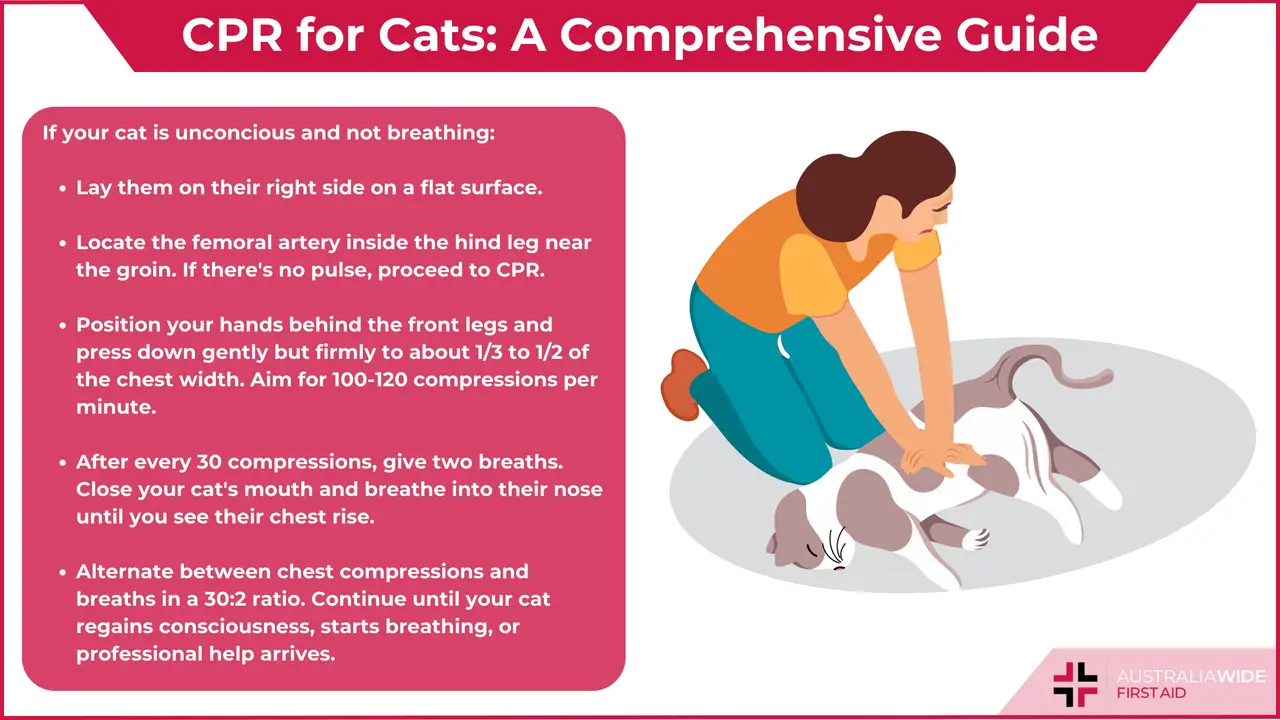CPR for Cats: A Comprehensive Guide


Cardiopulmonary Resuscitation (CPR) is a life-saving technique that can make a critical difference to the well-being of your feline friend.
In this comprehensive guide, we will explore the world of CPR for cats, delving into when it might be necessary, what signs to look for, how to perform CPR effectively, and the crucial importance of seeking immediate veterinary help.
CPR, short for Cardiopulmonary Resuscitation, is a set of emergency procedures designed to revive an animal that is in distress.
For cats, CPR involves a combination of chest compressions and artificial respiration, aimed at maintaining oxygen flow to vital organs, particularly the brain and heart.
It's a skill every cat owner should be familiar with, as it can be a matter of life and death.
Understanding when CPR might be necessary for your cat is crucial.
It's a response to specific life-threatening situations, such as cardiac arrest, respiratory failure, choking, or severe injuries.
Recognizing the signs that signal these emergencies is the first step towards performing CPR effectively.

Four key signs indicate that your cat may require CPR:
Performing CPR on a cat can be a daunting task, but with proper guidance, it becomes manageable.
Here's a step-by-step guide:
CPR for cats is an interim measure, not a substitute for professional veterinary care.
Even if your cat appears to recover during CPR, immediate professional help is essential.
Veterinary expertise is required to diagnose and address underlying issues.
If your cat remains unconscious, has severe injuries, or ingested something toxic, don't hesitate to call or visit an emergency vet.
Being prepared to perform CPR on a cat is an invaluable skill for any pet owner.
While it can buy critical time in emergency situations, it is not a replacement for professional veterinary care.
Remember, a quick response can make all the difference in saving your feline companion's life when they need it most.

April 16, 2024
Like humans, our canine friends are susceptible to allergies, which can significantly affect their quality of life. This article aims to shed light on common allergies in dogs, their signs and symptoms, treatment options, and advice on when to consult a veterinarian.

March 19, 2024
From respiratory distress to changes in droppings and abnormal behaviours, this guide outlines the key indicators of illness that require immediate attention. By understanding these warning signs, bird owners can take proactive steps to ensure their feathered companions receive timely medical treatment, ultimately promoting their health and well-being.

February 12, 2024
In the hustle and bustle of our daily lives, it's easy to overlook that our furry friends may not be leading lives as fulfilled as we'd like. Just like humans, dogs too can suffer from monotony, especially those spending large amounts of time indoors. Recognizing and addressing boredom in our canine companions is crucial for their overall well-being.